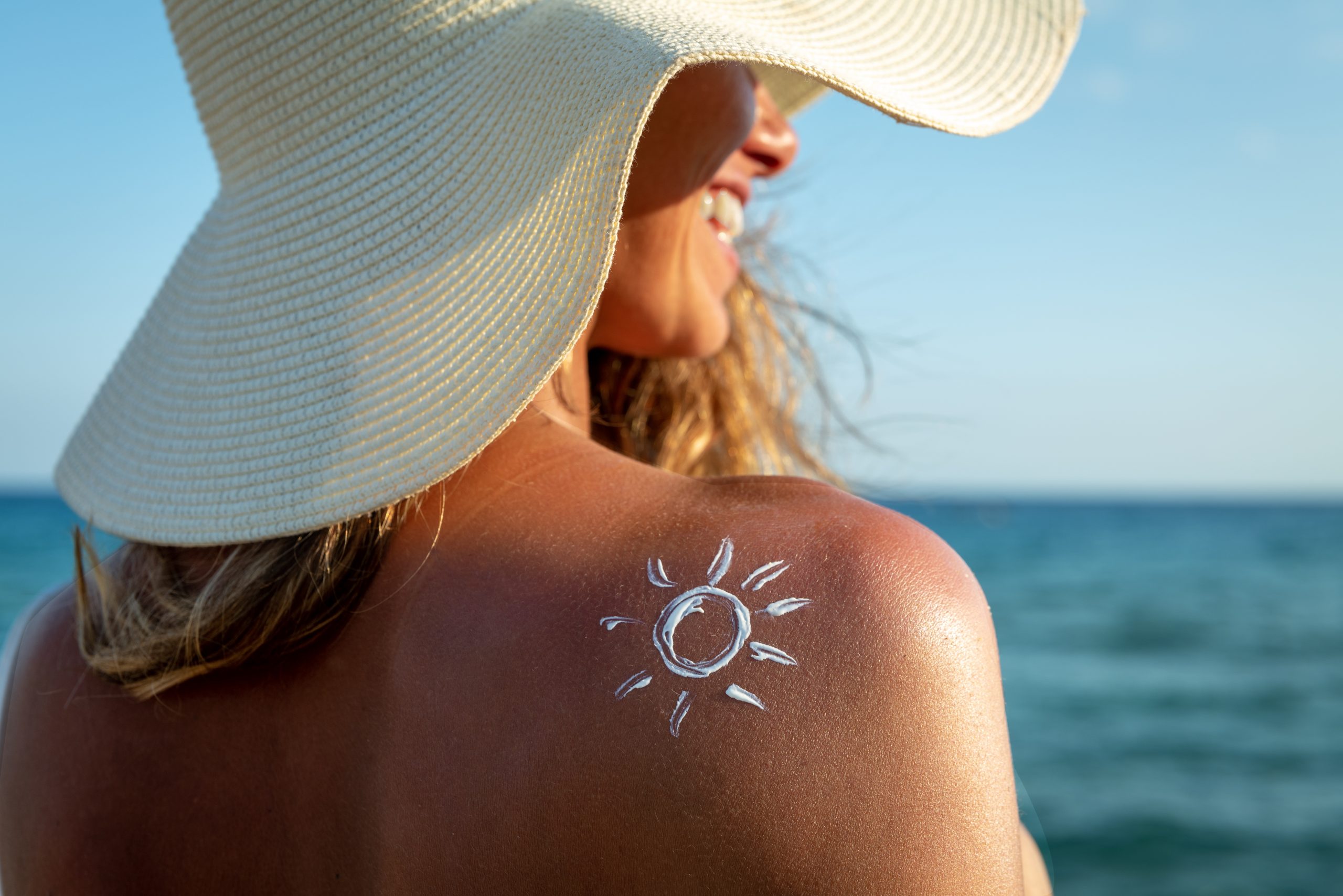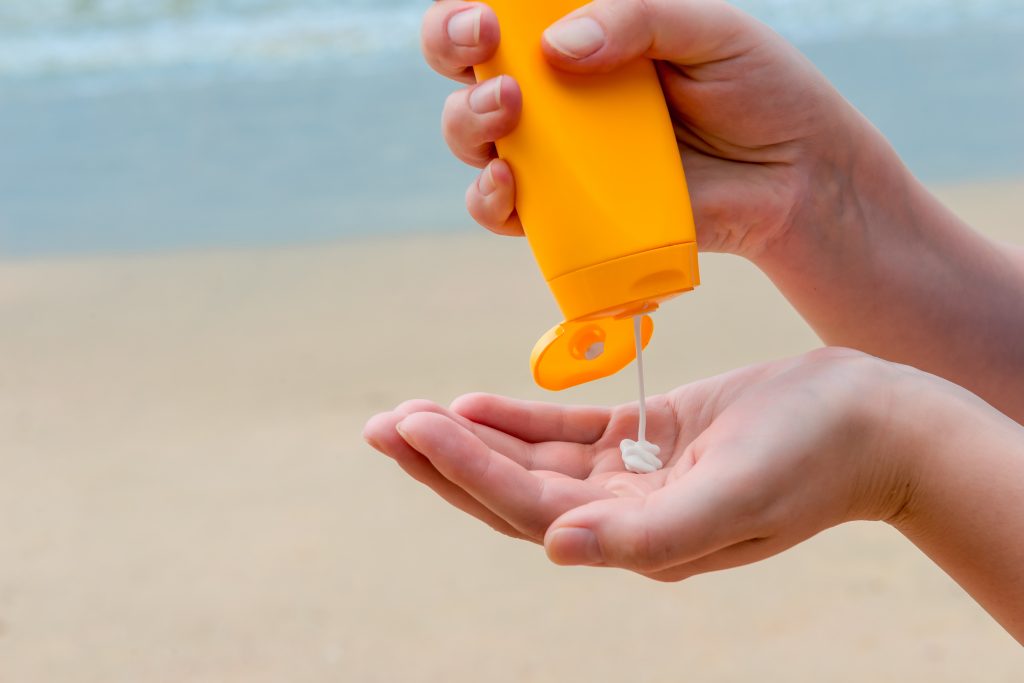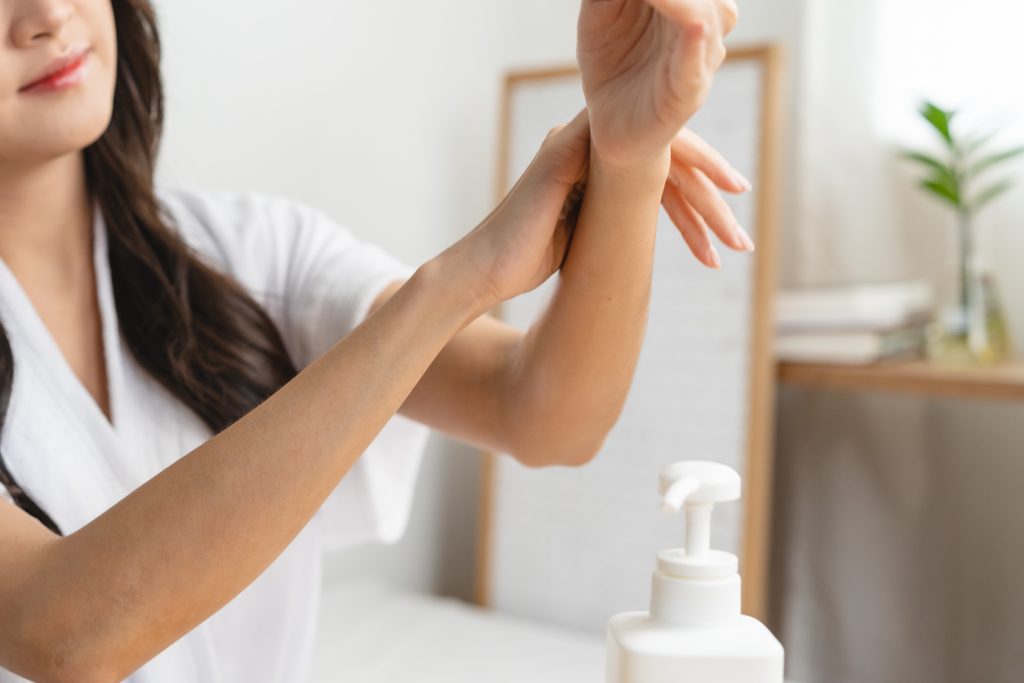As far as health and beauty tips go, few have more importance than knowing how to apply sunscreen. Not only is being sun-smart one of the best ways you can help prevent skin cancer or painful sunburns, but it also ensures that your skin looks and feels healthy for a long time! But with how much confusing information there is out there about applying sunscreen, it can be hard knowing what to do. Keep reading to learn about the best tips for applying sunscreen.
What is Sunscreen?
Sunscreen forms a protective barrier for your skin, keeping it safe from UV rays
When getting to know what sunscreen is, we will need to first understand what uv rays are and what types of uv rays there are which affect our skin. There are 2 main types of uv rays which affect our skin; UVA and UVB rays. UVA rays penetrate deeper into our skin, affecting our skin’s ageing process and accelerating it. UVB rays contact the surface area of our skin, with excess exposure to them causing skin burns.
Sunscreen is a topical product that is designed to shield your skin from these harmful UV rays emitted by the sun. It works by either absorbing or reflecting these rays, thus protecting your skin from the damage that they can inflict. Excess and prolonged exposure to UV rays can cause severe skin damage, including sunburn, premature ageing, and even skin cancer. A simple application of sunscreen can go a long way in ensuring that your skin is protected from these harmful effects.
Know the Strength of Your Sunscreen
We recommend you choose a sunscreen that is rated at SPF 50 for the best sun protection
In order to know how strong sunscreen is, we’ll need to know how they are graded for strength. Sunscreens are rated based on their sun protection factor, or SPF for short. The number after the SPF abbreviation lets you know its strength and effectiveness. An average sunscreen will most commonly have a rating of about SPF 30, however, we recommend going for a higher SPF 50 rated sunscreen as the best option.
Please note that a higher SPF doesn’t guarantee better protection, so pay attention to its broad-spectrum protection and water resistance. Broad spectrum protection is the sunscreen’s ability to protect your skin from both UVA and UVB rays. Sunscreen with water resistance will stay on your skin long after you expose it to water in environments like the pool or ocean. Water-resistant sunscreens come with an individual water resistance rating measured in time, with good quality sunscreen rated up to 4 hours water resistant.
Tips For Applying Sunscreen – Preparation
Cleanse And Exfoliate Your Skin
The first of our tips for applying sunscreen is to prepare and cleanse your skin. This means using a gentle cleanser that removes dirt, impurities, oil or makeup from your skin. And to help your sunscreen stick to your skin more, light exfoliation will remove any dead skin cells and prepare your skin even better. Try exfoliation 1 or 2 days prior to applying your sunscreen.
Moisturise
Put moisturiser on before sunscreen to maximise the protection
Applying moisturiser to your skin just a few minutes before applying sunscreen helps it to adhere to the surface of your skin. Not only is this better for your skin, but it also helps the sunscreen to form the protective barrier to UV rays that it’s designed to do. It’s important to not mix sunscreen and moisturiser together, as this reduces the effects of both as the ingredients in either have not been formulated to work together.
Tips for Applying Sunscreen – Avoiding Missed Areas and Streaks
Another one of our tips for applying sunscreen is to avoid missing areas and prevent streaks. The most simple way to avoid having missed areas and streaks when using sunscreen is to use a liberal amount. We recommend using about one full shot glass worth of sunscreen for your entire body. Using a large amount of sunscreen makes you rub and spread it out more evenly all over your body.
For smaller exposed areas, like hands, face, ears and neck not covered by clothing, spray sunscreen is a great alternative. Spray an even amount of sunscreen across exposed skin and rub into skin until evenly spread. A great way to avoid missing spots is to look carefully while spreading the sunscreen.
Don’t Forget to Reapply Often
Reapply sunscreen every 2 hours
The protective effects of sunscreen wear off over time. We recommend that you reapply sunscreen every 2 hours to maintain a good level of sun protection. This is made even more important if you are engaging in activities that wash away or spoil its effects, like swimming or sweating from exercise.
Choose the Right Product for You
Choose water resistant sunscreen for days at the beach and pool
The last of our tips for applying sunscreen is to choose the right one. But with so many different types of sunscreens available, it can be overwhelming to choose the right one for your needs. Some offer long-lasting protection, while others claim to be water-resistant. Some are specifically formulated for sensitive skin, while others are packed with antioxidants and other skin-loving ingredients.
For a normal day out where your exposure to the sun is not excessive, try sunscreens that are labelled as everyday use, or try ones with added moisturiser included in them. With days out in the park or near places with mosquitos and insects, there are sunscreen options with insect repellent. For the beach and pool, sunscreen that is water-repellent is the best option. And finally, for sports, choose a sunscreen that is sweat resistant.
Other Tips to Take Care of Your Skin
Hats with a wide brim are great for sun protetion
Now that you know how to apply sunscreen and the different types of sunscreen available, it’s time to go over how you can help protect your skin from the sun in other ways. The best way outside of sunscreen application is to wear sun-protective clothing, such as long-sleeved shirts and long pants. In hot weather, brimmed hats, and specifically broad-brimmed hats, are also able to provide great protection for your face and neck while still keeping you cool.
Protect Your Skin!
Using sunscreen to protect your skin from harsh ultraviolet rays and sun damage is key to keeping it healthy and vibrant for years to come. Understanding how it works, what types there are, and the best application practices are key to ensuring maximum skin protection. From reapplying throughout the day and preparing your skin prior to application, following these tips for applying sunscreen help your skin stay safe in sunny weather. And for more skincare tips, head over to the HH Australia blog today!










